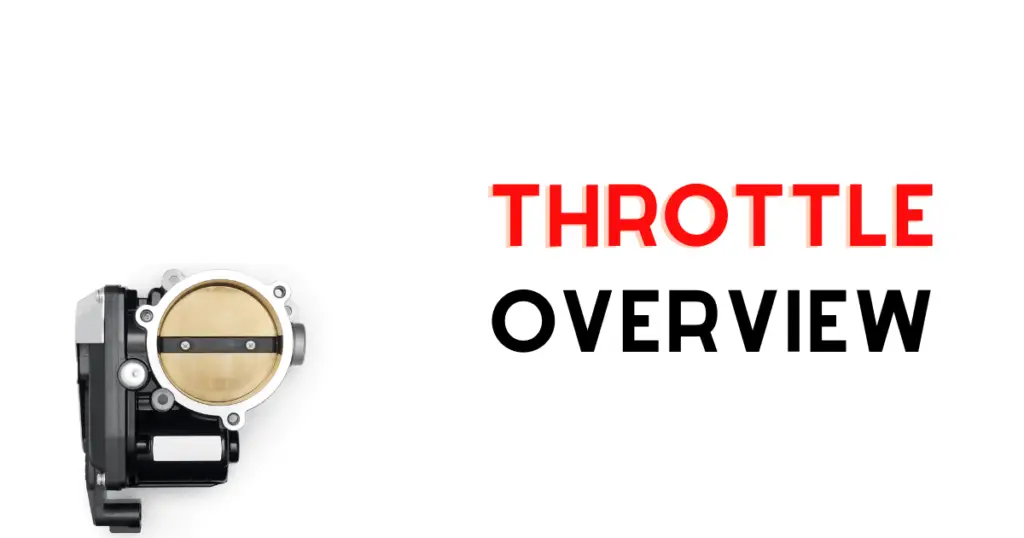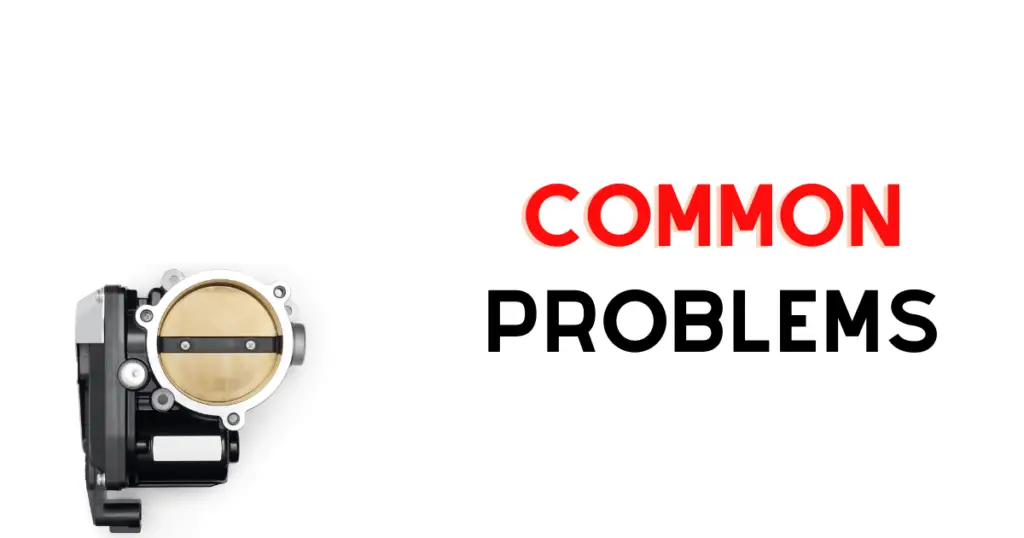Harley Davidson motorcycles are known for their powerful engines, sleek designs, and unique sound. However, even the most well-built machines can experience issues, and one problem that Harley Davidson owners may encounter is throttle body problems. Throttle body problems can cause a variety of issues, including poor acceleration, stalling, and rough idling.
Throttle body problems can occur due to a variety of reasons, including a malfunctioning throttle position sensor, a dirty throttle body, or a faulty throttle control actuator. In some cases, the issue may be related to the electronic throttle control system, which can cause lag or unresponsive acceleration. If left unaddressed, these problems can cause serious issues and may even lead to accidents. Therefore, it is essential to be aware of the signs of throttle body problems and take action immediately if you suspect that your Harley Davidson is experiencing these issues. But what else do you need to know? Let’s get into it.
Quick navigation:
– Heritage Softail Problems: A Tumultuous Trip Through Time
– Dyna Wide Glide Problems: Common Issues and Solutions
– Dyna Super Glide Problems: Common Issues to Watch Out For
– Dreaded Road King Problems: Exhaustive Roundup (Years 2000-2017)
– Most Annoying Street Glide Problems: Rounded Up (’06-19)
– The Most Aggravating Harley Davidson Ultra Limited Problems
– Nasty Ultra Classic Problems To Avoid (Glossary)
– Most Dreadful Harley Pan America Problems (Revealed)
Understanding Harley Davidson Throttle Systems

Electronic Throttle Control Explained
Harley Davidson introduced Electronic Throttle Control (ETC) in 2008, which replaced the traditional mechanical throttle linkage with an electronic system that sends signals to the motorcycle’s engine control module (ECM) to control the throttle. The ETC system uses a twist grip sensor to detect the rider’s throttle input, and then sends a signal to the ECM to adjust the throttle opening accordingly. This system offers a more precise and responsive throttle control than traditional throttle cables.
Throttle By Wire vs. Traditional Throttle Cables
Throttle By Wire (TBW) is a type of ETC system that uses electronic signals to control the throttle, while traditional throttle cables use a mechanical linkage to control the throttle. TBW systems offer smoother and more consistent throttle response, as well as additional features such as cruise control and traction control. However, TBW systems can be more complex and may require additional maintenance compared to traditional throttle cables.
Harley Davidson throttle body problems can occur with both ETC and TBW systems. Common issues include throttle lag, unresponsive acceleration, and intermittent loss of power. These issues can be caused by a variety of factors, including a faulty throttle position sensor, a malfunctioning ECM, or a damaged twist grip sensor. However, there are solutions available to address these problems, such as recalibrating the ETC system or replacing faulty sensors.
In conclusion, understanding the differences between ETC and traditional throttle systems can help riders diagnose and address throttle problems on their Harley Davidson motorcycles. Regular maintenance and proper calibration of the ETC system can help prevent throttle issues and ensure optimal performance.
Most Common Harley Davidson Throttle Body Problems

Harley Davidson motorcycles are known for their power and performance. However, like any other vehicle, they are prone to some mechanical issues. One of the most common issues with Harley Davidsons is related to the throttle body. In this section, we will discuss the most common throttle body issues in Harley Davidsons.
Symptoms of Throttle Position Sensor Failure
The throttle position sensor (TPS) is an essential component of the throttle body. It is responsible for measuring the position of the throttle plate and sending this information to the engine control module (ECM). If the TPS fails, the engine may not receive the correct signal, resulting in poor performance and unresponsive acceleration.
Some of the symptoms of TPS failure include a check engine light, diagnostic trouble codes (DTCs) such as P0120, P0122, P0123, P0220, and P0222, and unresponsive acceleration. If you experience any of these symptoms, it is recommended to have your Harley Davidson inspected by a qualified mechanic.
Related:
– All You Need To Fix Your Harley Temperature Sensor Problem
– Harley Davidson Crank Position Sensor Symptoms Get Revealed
– Harley Speed Sensor Symptoms Get Revealed (+Easy Fixes)
Wiring Issues and Electrical Faults
Wiring issues and electrical faults are another common cause of throttle body problems in Harley Davidsons. Corrosion, loose connections, and faulty wiring can prevent the TPS from sending the correct signal to the ECM, resulting in poor performance and other issues.
To prevent wiring issues and electrical faults, it is recommended to regularly inspect the wiring and connectors for any signs of damage or corrosion. If you notice any issues, have them repaired by a qualified mechanic as soon as possible.
Throttle Control Actuator and TCA Connector Problems
The throttle control actuator (TCA) is responsible for controlling the throttle plate’s position based on the signal received from the TPS. If the TCA fails, the throttle may not respond correctly, resulting in poor performance and other issues.
Some of the symptoms of TCA failure include a check engine light, diagnostic trouble codes (DTCs) such as P1510 and P2101, and a faulty throttle position sensor. The TCA connector can also be a source of problems. Loose or corroded connections can prevent the TCA from receiving the correct signal, resulting in poor performance and other issues.
To prevent TCA and TCA connector problems, it is recommended to regularly inspect the connectors for any signs of damage or corrosion. If you notice any issues, have them repaired by a qualified mechanic as soon as possible.
In conclusion, the throttle body is a critical component of Harley Davidson motorcycles, and any issues with it can result in poor performance and other problems. Regular inspection and maintenance can help prevent these issues and keep your Harley Davidson running smoothly.
Maintenance and Troubleshooting
Regular Maintenance for Optimal Performance
Regular maintenance is essential for the optimal performance of your Harley Davidson motorcycle. Proper maintenance ensures that your bike runs smoothly and reduces the chances of throttle body problems. Here are some tips for regular maintenance:
- Check the throttle body seals and gaskets for any signs of wear or damage. Replace them if necessary.
- Use dielectric grease on the electrical connectors to prevent corrosion and ensure good electrical contact.
- Adjust the throttle cables to ensure the correct amount of slack.
- Check for any oil leaks around the throttle body and fix them immediately.
- Use high-quality fuel to prevent fuel supply issues.
Step-by-Step Troubleshooting Guide
If you experience any throttle body problems with your Harley Davidson motorcycle, here is a step-by-step troubleshooting guide:
- Check for any diagnostic trouble codes (DTCs) using a scan tool. Common DTCs for throttle body problems include P0120, P0220, P0122, P0123, P0222, and P0223.
- Check the TPS1 and TPS2 potentiometers using a digital technician 2 (DT2) scan tool. If the voltage readings are not within the specified range, replace the TPS sensor.
- Check the ECM connector for any loose or corroded terminals. If necessary, replace the affected terminals.
- Check the fuel supply system for any issues, such as clogged fuel filters or low fuel pressure. If necessary, replace the fuel filter or fuel pump.
- Check for any vibration issues that can cause the throttle body to malfunction. Tighten any loose bolts or screws that may be causing the vibration.
By following these maintenance tips and troubleshooting steps, you can keep your Harley Davidson motorcycle running smoothly and avoid any throttle body problems.
Advanced Topics and FAQs
Understanding Error Codes and Recalls
Harley Davidson throttle body problems can be indicated by various error codes, which can help to diagnose the issue. If a rider experiences any issues with their Harley Davidson’s throttle body, they should check for any error codes that may be displayed on the bike’s dashboard. These codes can be found in the owner’s manual or by consulting a professional mechanic.
In some cases, Harley Davidson may issue a recall for certain models that are experiencing throttle body problems. Riders should check with their local dealership or the manufacturer’s website to see if their bike is affected by any recalls.
Upgrades and Replacements
If a rider is experiencing frequent throttle body problems, they may want to consider upgrading or replacing the existing throttle body. Upgrades can include installing a higher-quality throttle body or a voltage regulator to help regulate the bike’s electrical system.
Replacing the throttle body can be a more expensive option, but it may be necessary if the existing throttle body is beyond repair. Riders should consult with a professional mechanic to determine the best course of action for their specific bike and situation.
Overall, it is important for riders to stay informed about common problems with Harley Davidson throttle bodies and to take action when necessary. By understanding error codes and recalls, and considering upgrades or replacements, riders can ensure that their bike is operating safely and smoothly on the open road.
Important Information
- What Year Harleys to Avoid: Comprehensive Guide (Experience)
- Road King Years To Avoid (A Mechanic Tells All)
- Street Glide Years To Avoid: Trust Me, For The Best
- Absolute Worst Harley Fatboy Years to Avoid (Or Else)
- Shovelhead Years to Avoid Like The Plague (Here’s Why)
- Sportster Years To Avoid (If You Know What’s Good For You)
- Electra Glide Years To Avoid: A Complete Overview